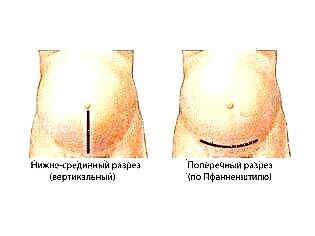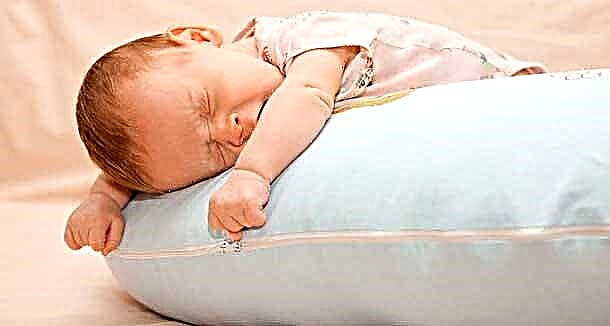
A scar left after an operative birth can significantly spoil the appearance of a woman's abdomen, and one wants to be beautiful and attractive at any age, regardless of the number of children. Therefore, one of the topical women's issues is the problem of removing a scar, masking it.
How does the outer suture heal?
There are many reasons why a woman has a cesarean section. The circumstances in which the operation takes place are also different, hence the different incisions in the abdominal wall.
Elective surgery usually involves making a low horizontal incision along the pubic line. It is relatively small and located in an area where skin tension is minimal. This incision makes it possible to make a cosmetic suture, which will be more laborious for the surgeon and will require a special technique of applying the material to the edges of the surgical wound, but it heals faster and then becomes invisible. Today, such incisions account for more than 90% of all delivery operations.


In an emergency operation, when circumstances arise that prevent the normal birth of a baby already in the process of childbirth, a cesarean can be performed with a vertical incision: from the navel downwards perpendicular to the pubic line. Such an incision requires less time, allows you to quickly remove the child, which is invaluable in situations where the prompt removal of the crumbs is a matter of life and death.
This dissection is called corporal. Such a seam heals more difficult, longer, various complications are not excluded. After the operation, it remains quite bright and noticeable, often sloppy, spoils the appearance of the abdomen. If the healing of a horizontal scar in the lower abdomen takes about 20 days on average, then the vertical suture will heal for about 60 days.


The healing mechanism is quite simple. The edges of the wound, tightened with suture material or special staples made of medical alloy, are pulled together due to the formation of new cells of the connective tissue. Gradually, not only the integrity of the tissue is restored, but also the blood vessels and nerve endings crossed at the time of the surgical delivery.
Types of scars
The softer and more correct the rehabilitation process was, the smoother the scar will be. The presence of inflammatory areas, places of immune rejection of the threads makes the seam uneven, ugly, and sometimes even keloid, if a woman has an individual tendency to overgrowth of connective tissue. This tendency may well be inherited.
After surgery, during the first month, the scar is usually bright, painful, and dense. Gradually he turns pale. As collagen is produced by new cells that have appeared instead of those damaged during the operation, the scar becomes softer, its borders are smoothed out, do not protrude. Such an inconspicuous scar is usually called normotrophic. It does not cause any pronounced anxiety, does not spoil the appearance of the abdomen.


In the presence of aggravating factors, both internal and external, the scar can heal with difficulty, with complications, and then one of the varieties of pathological scars is formed: keloid, hypertrophic or atrophic.

How to remove a pathological scar?
If the external scar healed on time, this process was not accompanied by inflammation, oozing, formation of adhesions, fistulas, hernias, then after 3-4 months it will be hardly distinguishable. The scar is neat, does not protrude above the surface of the skin, is uniform, and stretches well.
Normotrophic scars do not need to be removed - it is enough to treat them for some time with special ointments, gels, or to apply absorbable patches at home.
Regenerating ointment "Contractubex" in most cases helps to reduce the appearance of an already unnoticeable scar.

A hypertrophic scar, which protrudes above the general level of the skin, at first hurts and even flakes, but over time it can decrease on its own or remain the same size, but it tends to fade.
In the fight against hypertrophic scars, both local remedies and cosmetic procedures are usually recommended. Ointment alone cannot cope with such a scar - it is most effective to apply a set of measures.


Atrophic sutures are rare. Such a scar looks sunken, sunken, pale. Its level is below the general level of the skin. Techniques that promote the production of collagen and fill the gap with it help get rid of the ugly line on the stomach.
As with hypertrophic scars, beauty treatments, topical treatments and minor medical procedures such as injections of hyaluronic acid in the scar area help.


The keloid scar is prone to overgrowth. The scar, even six months after the operation, remains bright, purple or red, saturated, it gradually grows into neighboring completely healthy tissues. The surface of the scar is strongly protruding, the edges are uneven, on palpation, the scar is painful, dense. Such a defect will require medical correction, sometimes even surgical excision, and at the stage of recovery after treatment - cosmetic procedures.


We need to be clearly aware that the very question of how to get rid of a scar is wrong. It is completely impossible to get rid of it, but it is quite possible to make the postoperative suture more accurate and less noticeable.
Fresh scar correction methods
The younger the scar, the more effective conservative topical remedies can be. Ointments and gels, of course, do not guarantee an effect in most cases, but it's worth a try. A scar is considered young if it is under 1 year old.
If the scar has been present for more than 12 months, conservative treatment is considered ineffective. For the correction of a young scar, silicone-based products, hormonal agents and enzyme-containing preparations in the form of gels, ointments and patches are suitable.
It is categorically contraindicated to use local reagents until the postoperative wound is completely healed. If there are problems, discharge comes from the scar, its integrity is violated, then local therapy should not be used.

A woman can use local preparations within one and a half to two months after the operation, if there are no complications. A doctor will help you choose a drug. Pharmacists offer a wide range of such products. The best silicone-containing reagents are Dermatiks, Regivasil, Zeraderm.
Among hormonal agents, according to reviews, glucocorticosteroids and bone steroid hormones show the best results - they not only prevent the development of inflammation, but also at the hormonal level suppress the production of excess collagen and the proliferation of connective tissue. They should not be taken without a doctor's prescription, especially for lactating women.
Enzyme preparations do not have as many contraindications as hormonal ones, and are therefore more widely used. These include "Kontaktubex", as well as "Fermenkol" and the usual "Heparin ointment".
There is another subgroup of enzyme preparations: products based on oils and vitamins. They do not have a pronounced effect and will most likely be completely useless in the presence of a rough and sloppy scar, but they can well be used by happy owners of neat cosmetic scars.

How to remove an old scar?
If the scar remains ugly after a year, and the woman wants to correct it, then we will talk about a set of measures for correcting old scars. Local funds are no longer able to cope with this task on their own - they need a complex impact. As a rule, if we are not talking about a keloid scar, doctors recommend starting with the use of local remedies at the same time as cosmetic procedures.
To begin with, hyaluronic acid or other substances can be injected into the deep layers of the connective tissue of the scar using electrophoresis or phonophoresis - their usual external use will no longer be effective. With phonophoresis, the substance will be injected deeper using an ultrasonic wave, and with electrophoresis, using an electric current.

The bad news is that it will take a long time to heal. It is reassuring that a woman does not have to attend such procedures in a physical room. Today there is a large selection of compact devices for home use that will help you to treat without significant time investment.
If such a complex of measures does not give an effect, then you can try to resort to the services of cosmetology rooms and clinics - they can offer a woman some useful procedures.
- Chemical peeling of the seam. This is a procedure in which the scar is peeled with the help of fruit acids and abrasive materials, thereby improving its condition and blood circulation. Several sessions need to be performed, the result is not guaranteed.
- Laser resurfacing. This is a method that involves the step-by-step and layer-by-layer removal of the overgrown connective tissue from the scar. This procedure is quite painful, expensive, and requires quite a few of them.
- Injection correction. This is a method in which hyaluronic acid or other substances to dissolve pathological growth will be injected into the area of the scar.
In the fight against severe, keloid scars, plastic surgery comes to the rescue.
There are various methods of excision of sloppy pathological scars. In essence, excision is a new operation. The disadvantage is that not a single doctor will be able to guarantee that the keloid scar will not return, because the tendency to proliferation of connective tissue can be genetic, and no one has canceled postoperative complications.

It should be noted that there must be good reasons for surgical excision. Small scars, even if their appearance does not suit the patient too much, plastic surgeons will not remove - they will recommend other, more gentle methods.
Today, such type of correction as a tattoo in the scar area is becoming more and more popular. A skilled tattoo artist will make a woman's belly not just normal, but really beautiful, and the scar will be completely invisible. This method is not suitable for those who are going to lose a lot of weight. With weight gain, the skin of the abdomen will also stretch, the pattern will become ugly.

It should be added that the tattoo is not suitable for women who are planning to give birth. During the carrying of the baby and after the next cesarean section, you will have to not only come up with a new method of disguise again, but also remove the old tattoo, which is painful and unpleasant.


You can learn more about the postoperative cesarean section scar in the following video.



